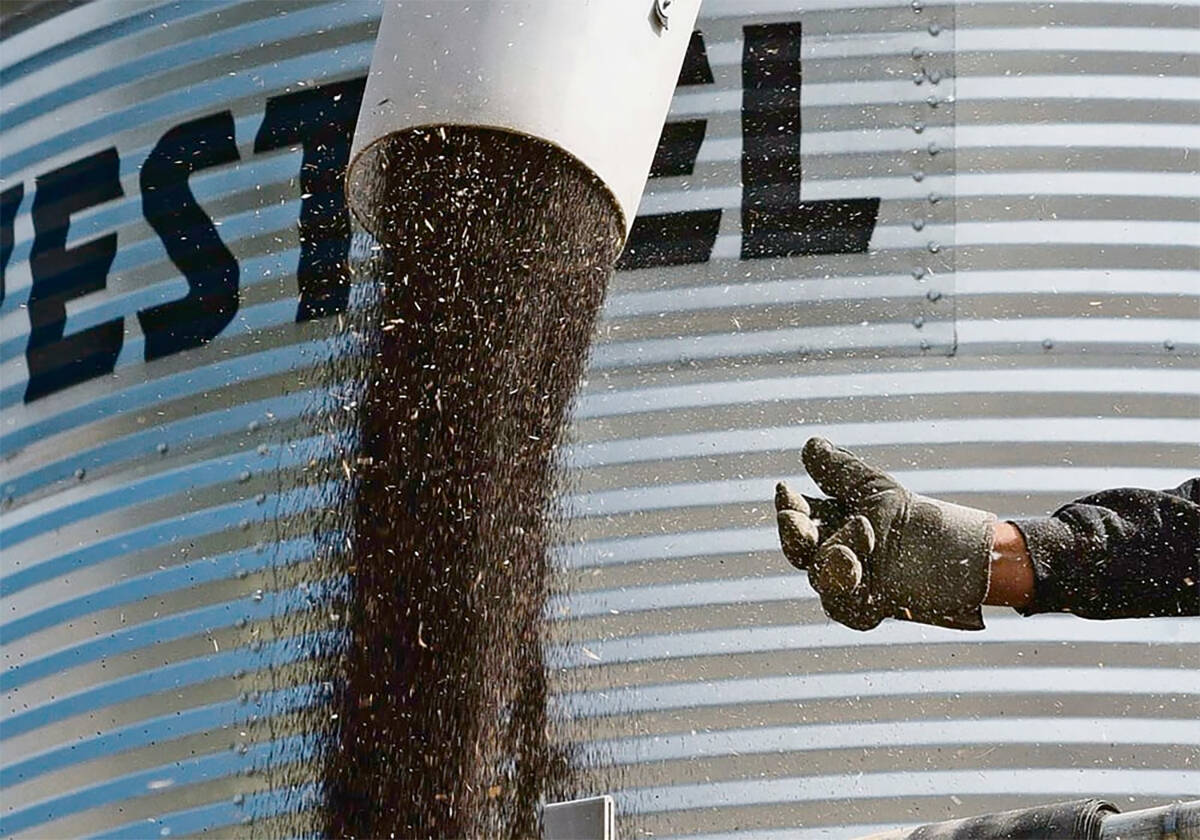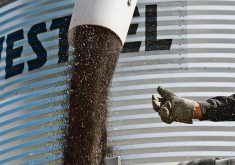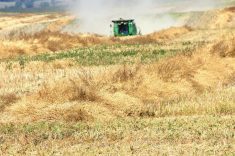MEDICINE HAT, Alta. – Fusarium’s spread in Alberta has elevated the disease to a prairie-wide concern from one that had been limited to the central and eastern Prairies.
“We have this disease in southern Alberta and we can ill-afford to ignore it,” said Alberta plant disease specialist Ron Howard.
Fusarium head blight has been on a steady march west from the wetter eastern Prairies since the early 1990s.
In 1993, fusarium graminearum destroyed Manitoba’s most popular spring wheat variety, Roblin, and caused many growers there to avoid wheat and barley altogether.
Read Also

Farmers urged to be grain-safe this fall
Working around grain bins comes with risk, from farmers falling to drowning in grain: Experts have five tips to help avoid grain-related accidents this harvest.
“Since that time it is estimated that it has cost Manitoba farmers more than $1 billion … it’s now well established in southeast Alberta, in crop districts one and two,” he said.
Shauna Fankhauser works for the Southern Applied Research Association in Lethbridge and farms near Claresholm, Alta.
“This was a wet year. If there is one thing that this disease needs it is water,” she said.
“It has to rain during flowering. The disease needs those moisture events. This summer, well, we know that happened,” said Fankhauser, about the disease that can affect wheat, barley, oats, rye, corn and triticale.
Fusarium, specifically the graminearum type, is a serious pest that can result in grade and yield losses, livestock poisoning and delivery rejections of crops such as malting barley.
Fusarium has been listed as reportable disease in Alberta since 1999.
The fungal pest produces deoxynivalenol, also known as DON, or vomitoxin. The mycotoxin causes serious production issues in livestock.
Fusarium damaged grain that is malted causes foaming problems and also creates production problems for ethanol distillers, bakers and pasta makers.
Tolerance for malting barley is zero. In feed for pigs, dairy cattle and horses one part per million is acceptable. For beef cattle, poultry and sheep, five parts per million are allowed.
Howard said the tolerances for infected grain have fallen in the past year.
“In August the Canadian Grain Commission reduced the acceptable amounts you can deliver,” he said.
This was a result of a more prevalent, more aggressive and toxic strain of the fungus that is showing up in Canada, called 3-ADON. Until 1999, all fungus types were a strain called 15-ADON.
The 3-ADON invader has mostly displaced its predecessor and its ability to produce more DON created a need for lower tolerances of observed damage in delivered grain.
In Manitoba, almost 70 percent of fusarium infections are now of the 3-ADON type.
While the disease mainly affects cereal production, fusarium graminearum has also become a serious pest of potato growers in North Dakota, where it causes dry rot.
“And it puts less grain in your bins,” Fankhauser told producers attending the Southern Alberta Conservation Association conference in Medicine Hat last week.
“If you haven’t seen this pest, you are going to and you will need to take some action as a result,” she said.
Best management practices for fusarium in cereals
• Start with fusarium free seed, compulsory in Alberta.
• Higher seeding rates reduce tillering and shorten flowering period when the plants are susceptible to infection.
• Use less susceptible varieties. Wascada and Glenn are the two CWRS varieties that have good resistance to infection.
• Crop rotation should recognize that the disease lives in the stubble and can’t live in soil. It takes two years to break down in small cereals and three or more years in corn.
• Reduce economic risk by staggering planting dates across the farm to avoid having all cereals flowering at the same time.
• Plant winter wheat varieties such as CDC Buteo and Norstar with fair resistance. Winter wheat often flowers before the fusarium spores develop and start flying.
• Irrigation management can reduce risk of infection because the fusarium needs moisture and humidity to spread. Fill the soil profile prior to flowering. Leave the pipes off during flowering for as long as possible.
• Fungicides can be used, but they are preventive and used at 10 percent flowering. Use flat fan nozzles, facing forward at 30 to 45 degrees to cover heads well with pesticide.
• At harvest, turn up the fan speed on combine to separate the lighter, fusarium damaged seed out for a cleaner commercial sample that might fall under the CGC maximum infection levels.
• Run the combine chopper to shred and spread the straw to break down residue.














